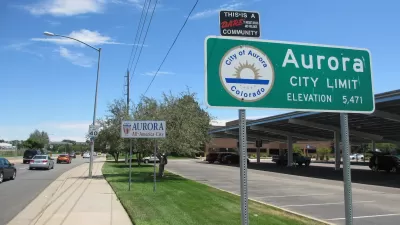Lawns - long known to be the main culprit in urban water consumption, now can be blamed for another environmental woe - greenhouse gas producer in excess of whatever carbon it 'sinks'. The gas is nitrous oxide - 300 times more potent than CO2.
Grass, like most plants, has long been thought as instrumental to counteracting global warming by sequestering atmospheric carbon into the soil as well as converting carbon dioxide into oxygen. In this University of California at Irvine study, soon to be published in the journal Geophysical Research Letters, shows that the lawns cause far more emissions than they store in the soil.
"(G)reenhouse gas emissions from fertilizer production, mowing, leaf blowing and other lawn management practices are four times greater than the amount of carbon stored by ornamental grass in parks, a UC Irvine study shows. These emissions include nitrous oxide released from soil after fertilization. Nitrous oxide is a greenhouse gas that's 300 times more powerful than carbon dioxide."
Thanks to Bob Maginnis
FULL STORY: Urban 'green' spaces may contribute to global warming, UCI study finds

Maui's Vacation Rental Debate Turns Ugly
Verbal attacks, misinformation campaigns and fistfights plague a high-stakes debate to convert thousands of vacation rentals into long-term housing.

Planetizen Federal Action Tracker
A weekly monitor of how Trump’s orders and actions are impacting planners and planning in America.

In Urban Planning, AI Prompting Could be the New Design Thinking
Creativity has long been key to great urban design. What if we see AI as our new creative partner?

King County Supportive Housing Program Offers Hope for Unhoused Residents
The county is taking a ‘Housing First’ approach that prioritizes getting people into housing, then offering wraparound supportive services.

Researchers Use AI to Get Clearer Picture of US Housing
Analysts are using artificial intelligence to supercharge their research by allowing them to comb through data faster. Though these AI tools can be error prone, they save time and housing researchers are optimistic about the future.

Making Shared Micromobility More Inclusive
Cities and shared mobility system operators can do more to include people with disabilities in planning and operations, per a new report.
Urban Design for Planners 1: Software Tools
This six-course series explores essential urban design concepts using open source software and equips planners with the tools they need to participate fully in the urban design process.
Planning for Universal Design
Learn the tools for implementing Universal Design in planning regulations.
planning NEXT
Appalachian Highlands Housing Partners
Mpact (founded as Rail~Volution)
City of Camden Redevelopment Agency
City of Astoria
City of Portland
City of Laramie





























